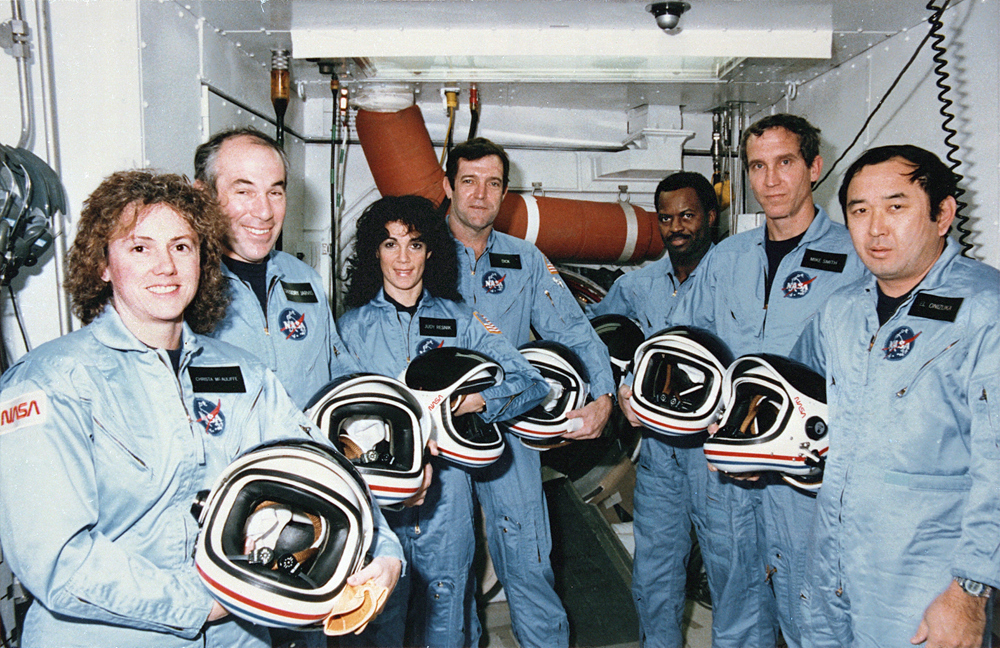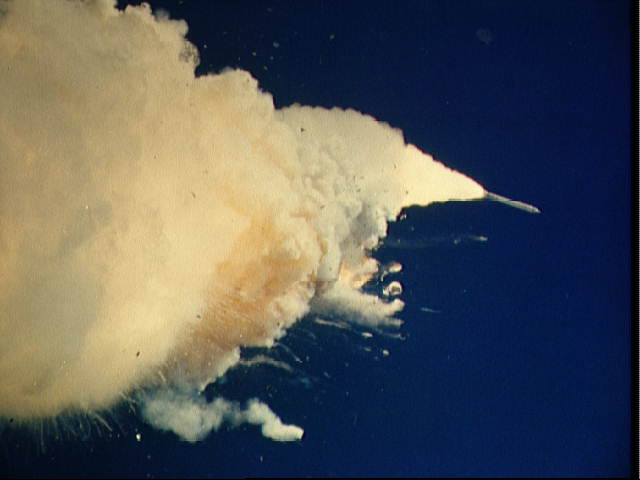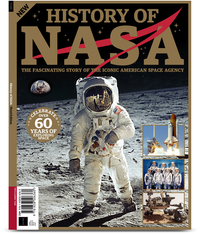The lessons learned from the fatal Challenger shuttle disaster echo at NASA 35 years on

It was 35 years ago today (Jan. 28) that the most defining accident of NASA happened, when the space shuttle Challenger exploded after launch.
In the immediate aftermath, seven astronauts died — including the first teacher in space (Christa McAuliffe), the second African-American in space (Ronald McNair), the second female NASA astronaut in space (Judith Resnik), the first Asian-American astronaut (Ellison Onizuka), Hughes Aircraft payload specialist Gregory Jarvis, pilot Michael Smith and commander Dick Scobee.
The shockwaves through NASA and its aerospace and defense partners were immense, and it took more than two years to resume flights after an external investigation, redesigns and other measures. The accident also caused a few program cancellations, such as an astronaut jetpack that flew spacewalkers on satellite rescue missions and a plan to launch space shuttles from California in addition to Florida.
Infographic: The Space Shuttle Challenger disaster: what happened?
History of NASA: $22.99 at Magazines Direct
Discover the story of how and why NASA was created, its greatest triumphs, darkest days, and of the times it exceeded all possible hopes. A tale of adventure, heroism and resourcefulness, learn of the space agency's greatest achievements and how — over six decades — the organization has consistently and tirelessly devoted itself to its founding principle: that "activities in space should be devoted to peaceful purposes for the benefit of all humankind".
A lengthy investigation of the accident conducted by the independent Rogers Commission revealed a plethora of safety issues. Among the commission's findings were a flawed decision-making process for launch, and managers not fully appreciating the dangers of launching a space shuttle in cold weather. The ultimate technical cause was "destruction of the [solid rocket booster] seals that are intended to prevent hot gases from leaking through the joint, during the propellant burn of the rocket motor," the commission wrote.
Numerous design changes to the rocket boosters (including a different joint design) allowed the space shuttle to continue safely flying the solid rocket boosters following Challenger, recalled Charlie Precourt, a former NASA astronaut and veteran of four space shuttle missions who today is vice president of Northrop Grumman Propulsion Systems.
Precourt leads the team manufacturing the rocket boosters for NASA's forthcoming Space Launch System, or SLS megarocket, using a design derived from the space shuttle's boosters that has been rigorously tested and flown in the decades since Challenger, Precourt said in an exclusive statement to Space.com.
Get the Space.com Newsletter
Breaking space news, the latest updates on rocket launches, skywatching events and more!
"This was proven through rigorous development, validation testing and analysis, and has been demonstrated with the successful operation of over 200 boosters, including 86 successful space shuttle launches and over 40 successful static tests. Following each launch and test, boosters were thoroughly inspected and joint performance verified," he said.
Challenger's demise prompted many books, documentaries and discussions, including a 2020 Netflix docuseries. Another fatal incident in 2003, the Columbia disaster that killed seven astronauts, renewed calls for NASA to focus on safety. The shuttle, after another investigation and more redesigns, returned to flight and astronauts were able to finish constructing the International Space Station (ISS). But Columbia eventually spurred the end of the space shuttle program, which ran 135 missions with 2 fatal flights over 30 years before retiring in 2011.
Safety concerns do still occur during human missions, which demand a high degree of care because they are so technically complex and carry huge risks. Conversations continue about safety to this day in all sectors of the space community. For example, NASA did a large shakeup in leadership in human exploration in 2019, citing cost and schedule concerns with the Artemis moon program, which aims to put astronauts on the moon in 2024 — a timeline that some members of the space community found to be overly ambitious. At the time, NASA repeatedly emphasized it was proceeding swiftly, but safely, in doing key tests to eventually bring astronauts to the moon.
In the coming decade, it is anticipated that private companies like Virgin Galactic and Blue Origin will be among those carrying people into space on their own spacecraft, and facing their own questions about safety requirements for their astronauts (largely space tourists or private individuals). Earlier this week, Axiom Space announced the first private crewed mission to the ISS, which will launch four people to orbit aboard a SpaceX Crew Dragon in 2022.
Historically, other professional space agencies besides NASA have had their own spaceflyer deaths or incidents. A fairly recent example, which turned out safely, was the two crewmembers (American and Russian) who experienced a 2018 abort aboard a Russian Soyuz spacecraft. (Russia, working with NASA, swiftly addressed the cause and resumed launching within weeks.)
In a thus increasingly crowded field for human exploration, NASA still remembers the lessons from Challenger — a vital part of the "DNA" of the organization, as one senior agency official told Space.com.
"All organizations have a culture, and it's almost like the DNA associated with an organization. It has a history and a memory. Even though people come and go, that DNA is always there," said Phil McAlister, NASA's director of commercial spaceflight development.
McAlister's division oversees the next generation of astronaut vehicles to the ISS that only just started flying people last year, in the case of SpaceX's Crew Dragon. The Boeing Starliner spacecraft is still working to meet key milestones to allow people on board. The company hopes to fly a second uncrewed test mission in March to address software issues that glitched a similar 2019 flight and caused NASA to issue 80 "corrective actions" to Boeing's work on Starliner.
A 2018 report from Space News said Boeing and SpaceX initially struggled to meet NASA's stringent safety requirements for commercial crew. Three years later, however, McAlister said the companies' focuses and NASA's focus are aligned to make the program "safe, reliable and cost effective."
Commercial crew combines the companies' cultures and NASA cultures, McAlister added, to be effective for the program's needs. (Public companies like SpaceX and Boeing have a responsibility to shareholders to ensure profitability, while NASA's government mission is — in part — to push forward advances in fields such as space and science to benefit different populations and sectors on Earth.)

Additionally, NASA does carefully review all requirements to ensure the commercial spacecraft meet mission specifications, including safety, McAlister said. Boeing and SpaceX do listen, he added — and have at times, asked for data all the way back to the Apollo program of the 1960s and 1970s to learn from NASA's experience.
NASA personnel are trained "strongly," McAlister added, not to dictate the spacecraft design from commercial partners, but rather to say whether the design meets NASA's needs — and to suggest remedies, as the situation dictates.
"We have been able to communicate and translate that experience [of Challenger] to our partners, and the importance that we learn from attention to detail, and staying 'hungry' — meaning, always looking at the hardware and what it's trying to tell us," McAlister said.
Here, McAlister was referring to what author and sociologist Diane Vaughan called "normalization of deviance" in her book "The Challenger Launch Decision" (University of Chicago, 1996). To simply explain this complex topic: Seal problems had occurred in testing and on past shuttle flights before Challenger. But because engineers and managers saw seal issues occur with no major incident resulting, the "deviance" from the shuttle's design — the fact that these problems were not supposed to happen — was "normalized," meaning the flaws became more accepted.
That said, the flaws were never fully accepted. The launch decision was therefore contentious, and research about Challenger, such as Vaughan's, points to some participants in the process who felt their concerns were minimized or deprioritized, particularly from solid rocket booster contractor Morton Thiokol (today part of Northrop Grumman).
McAlister said the agency today has a process to allow those who dissent a voice, all the way up to the administrator's office, if need be. Those who dissent "rely on the data" from testing or flights to show their concern and try, as much as possible, to remove emotion from the process so that it is qualitative as possible, McAlister added.
If there is a dispute in commercial crew, for example, the process begins with "a lot of discussion, a lot of meetings," McAlister said. To respect the need to eventually move forward, a decision will be taken by NASA's Commercial Crew Program's control board, with the deciding vote cast by program manager Steve Stich.
If somebody still disagrees, another process begins at a higher NASA organizational level called the directorate program management council. Ultimate authority in that case falls to Kathy Lueders, who chairs the council and is also NASA's associate administrator of the Human Exploration and Operations Mission Directorate. (Lueders' previous managerial position was in the Commercial Crew Program, coincidentally.) Dissenters at that level can still bring up their concerns again until it reaches the NASA administrator — currently Steve Jurczyk, appointed to an acting position earlier this month — who has the final say.
Retired space shuttle astronaut Steve Smith said that he saw a large emphasis on safety within NASA after he first joined in 1989 as a payload officer; his responsibilities back then were integrating "payloads" or items to fly on space shuttles, which included meeting safety requirements. Smith was then selected as an astronaut in 1992 and flew four times in space, most recently on STS-110 in 2010.
"As a wannabe astronaut in 1986, it was absolutely devastating to hear the news [of Challenger]," he told Space.com, recalling reading letters to the editor in popular magazine Aviation Week and Space Technology debating whether returning to flight was the right thing to do.
In the 1980s, some in the community drew analogies with a fatal fire that killed the three-person Apollo 1 crew about 20 years before, in 1967, Smith said. "We had to relearn lessons that were painfully learned previously … this is a really dangerous business and we can get rolled into thinking it's not as difficult as it is."
Smith said there were a few things he took from Challenger. The first was the danger of human spaceflight, which had to be considered in everything NASA did. "When I joined in 1989, at every single meeting, safety was the number one topic," he said.
The approach rubbed off on international partners newer to human spaceflight, such as the European Space Agency (ESA), he said; around the same time, ESA was developing an automated transfer vehicle to dock cargo at the ISS. The ATV program (which retired in 2015) eventually saw all of its vehicles fly successfully to the space station, dock with vital experiments and equipment, and fly away safely.
The second thing Smith remembers NASA emphasizing is the importance of communication, especially if an astronaut or anyone else didn't understand something. "We were encouraged to say, 'Can you resay what you just said,' or 'I didn't quite follow that'," Smith said, not just in one-to-one discussions but also in larger meetings.
Chairs of NASA meetings would also ask if there was a dissenting opinion, Smith said. One time, in response to that question, he brought up a flight concern during a very large meeting at the NASA Johnson Space Center — the home for astronaut training in Houston. Smith added he was so impressed by this "dissenting opinion" approach that he uses it to this day in his own private business ventures, to great success.
Smith warned that with the passage of time, "diligence of some of these [safety] areas erodes a bit" and there must be renewed calls to pay attention, as the Columbia incident showed NASA and the community a generation after Challenger.
Columbia's demise also prompted an external Columbia Accident Investigation Board (CAIB) report that found numerous causes related to safety and technical matters. Some CAIB concerns echoed the Rogers Commission's findings on Challenger, such as a discussion on schedule pressure.
Columbia's demise came from a different part of the shuttle, however; insulating foam from an external tank ramp hit Columbia's wing during launch, causing a "breach" that eventually led to the shuttle's breakup as it hit superheated air in the atmosphere during landing two weeks later, CAIB said.
Columbia's fatal mission, however, was not the first to experience foam loss, as Smith recalled.
"The safety culture [at NASA] was incredibly strong — incredibly strong — even in the year 2003," Smith said, referring to the year Columbia broke up during landing. "But this is a really tough business. It's almost impossible to be perfect, but in hindsight, the hardware was talking to us in the few years before Columbia, but not in the obvious way that it was for Challenger."
Every year, NASA recalls Columbia, Challenger, Apollo 1 and all the other astronauts and cosmonauts who gave their lives for space exploration in its annual Day of Remembrance; as all three of the major NASA incidents fall in the same calendar week, the day usually falls in late January. This year's edition will be today (Jan. 28) — the same day as Challenger's demise.
Follow Elizabeth Howell on Twitter @howellspace. Follow us on Twitter @Spacedotcom and on Facebook.
Join our Space Forums to keep talking space on the latest missions, night sky and more! And if you have a news tip, correction or comment, let us know at: community@space.com.

Elizabeth Howell (she/her), Ph.D., was a staff writer in the spaceflight channel between 2022 and 2024 specializing in Canadian space news. She was contributing writer for Space.com for 10 years from 2012 to 2024. Elizabeth's reporting includes multiple exclusives with the White House, leading world coverage about a lost-and-found space tomato on the International Space Station, witnessing five human spaceflight launches on two continents, flying parabolic, working inside a spacesuit, and participating in a simulated Mars mission. Her latest book, "Why Am I Taller?" (ECW Press, 2022) is co-written with astronaut Dave Williams.










